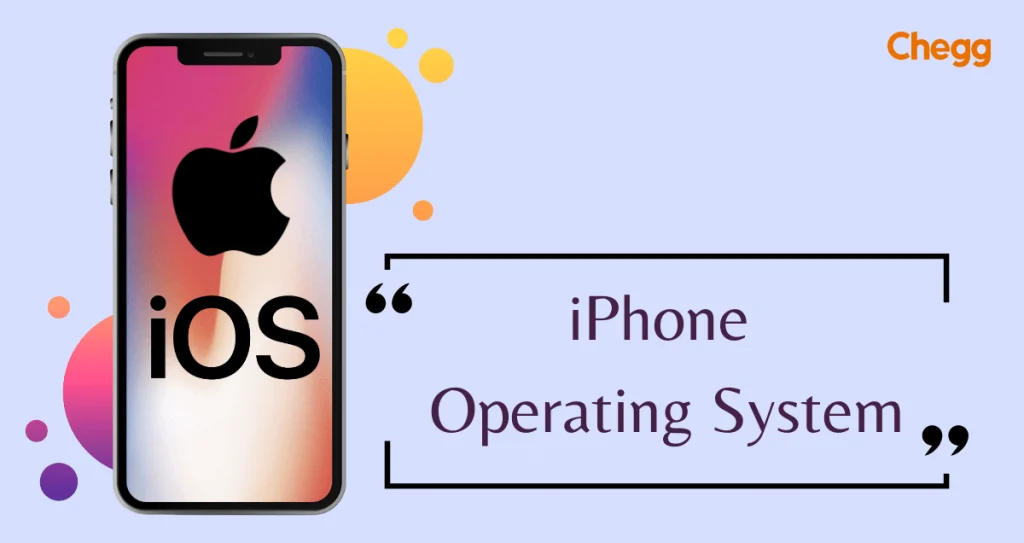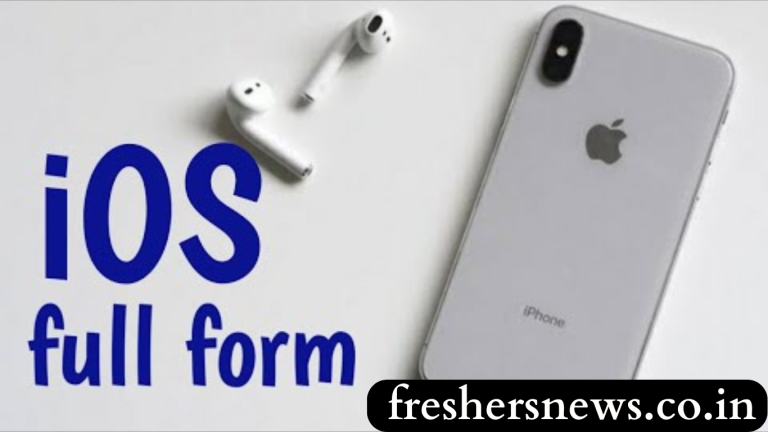iOS is a mobile operating system developed by Apple Inc. for its mobile devices. The full form of iOS is “iPhone Operating System.” iOS powers Apple’s iPhone, iPad, iPod Touch, and other Apple devices. This article will discuss the full form of iOS, history, and features. We are disscusing about What is the full form of iOS.
We are disscusing about What is the full form of iOS:

Apple iOS
iOS was first introduced in 2007, and the first iPhone was released the same year. The original version of iOS was called iPhone OS and was designed to run exclusively on the iPhone. It was not until the release of the first iPad in 2010 that the operating system was renamed to iOS.
As we mentioned earlier, the complete form of iOS is “iPhone Operating System.” This name reflects that iOS was initially designed to run on the iPhone. However, it has been adapted to run on other Apple devices, such as the iPad and iPod Touch.
Features of iOS
iOS is known for its user-friendly interface and its many features that make it a popular choice among smartphone users. Some of the notable features of iOS include:
- App Store: iOS has an App Store that contains millions of apps that users can download and install on their devices.
- Siri: Siri is Apple’s intelligent personal assistant that can help users with a variety of tasks, such as setting reminders, making phone calls, and sending text messages.
- Face ID: Face ID is a facial recognition system that allows users to unlock their devices simply by looking at them.
- iMessage: iMessage is Apple’s messaging app that allows users to send text messages, photos, and videos to other iOS users for free.
- iCloud: iCloud is Apple’s cloud storage service that allows users to store their files and data online and access them from any device.
Here’s a brief overview of the evolution of iOS
- iOS 1 – Released in 2007, iOS 1 was the first version of the operating system. It featured the iconic home screen with app icons, a built-in Safari web browser, and support for the iTunes Store.
- iOS 2 – Released in 2008, iOS 2 introduced the App Store, which allowed users to download and install third-party apps directly on their devices.
- iOS 3 – Released in 2009, iOS 3 introduced several new features, including copy and paste, MMS messaging, and Spotlight search.
- iOS 4 – Released in 2010, iOS 4 introduced multitasking, which allowed users to switch between apps and keep multiple apps running in the background.
- iOS 5 – Released in 2011, iOS 5 introduced iCloud, iMessage, and Siri.
- iOS 6 – Released in 2012, iOS 6 introduced Apple Maps, Passbook, and Facebook integration.
- iOS 7 – Released in 2013, iOS 7 featured a major redesign of the user interface, introducing a flatter and more colorful design.
- iOS 8 – Released in 2014, iOS 8 introduced a range of new features, including Continuity, which allowed users to seamlessly switch between Apple devices, and HealthKit, which provided a central hub for health and fitness data.
- iOS 9-Released in 2015, iOS 9 introduced new multitasking features for the iPad and improved Siri and the Notes app.
- iOS 10 – Released in 2016, iOS 10 introduced a redesigned lock screen, Siri improvements, and new Messages app features.
FAQs
What is the full form of iOS?
The full form of iOS is the iPhone Operating System.
Who developed iOS?
Apple Inc developed iOS.
When was iOS first released?
iOS was first released on June 29, 2007, alongside the first iPhone.
What devices run on iOS?
iOS runs on Apple’s mobile devices, including the iPhone, iPod Touch, and, previously, the iPad (before the introduction of iPadOS).
What is the latest version of iOS as of 2024?
As of 2024, the latest version of iOS is iOS 17.
How often are new versions of iOS released?
New versions of iOS are typically released annually, coinciding with the launch of new iPhone models.
What are some key features of iOS?
Key features of iOS include:
- A user-friendly interface with a home screen and app icons.
- App Store for downloading applications.
- Multitasking capabilities.
- Siri, Apple’s virtual assistant.
- Security features like Face ID and Touch ID.
- Regular software updates and support.
Can iOS be installed on non-Apple devices?
IOS is exclusively designed for Apple’s hardware and cannot be installed on non-Apple devices.
What is the difference between iOS and Android?
iOS is a proprietary operating system developed by Apple for its devices, known for its smooth integration, security, and user-friendly interface. Android, developed by Google, is an open-source operating system used by various manufacturers. It offers more customization options but varying performance and security levels.
How can I update my iOS device to the latest version?
To update your iOS device, go to Settings > General > Software Update. If an update is available, you can download and install it from there.
Conclusion
In conclusion, iOS is a mobile operating system developed by Apple Inc. for its mobile devices. The complete form of iOS is the “iPhone Operating System.” It has a rich history and many features make it a popular choice among smartphone users. Whether you are an iPhone user or an iPad user, iOS offers a seamless experience that is easy to use and navigate.

